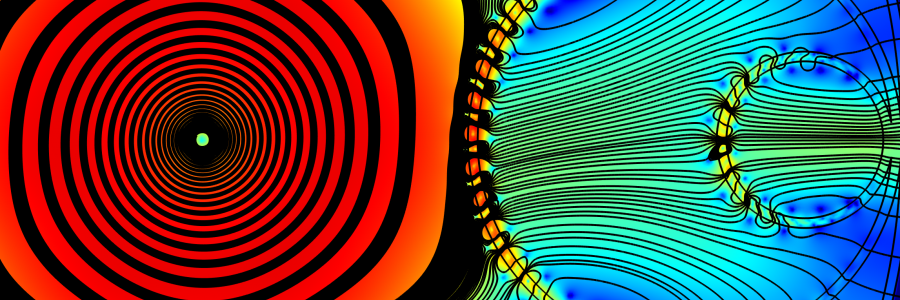These fibres guide light due to a precise microstructure that acts to keep the light in the hollow core. There are several physical mechanisms at play in guiding light and in causing it to be scattered, attenuated of leaked away. The design of the microstructures surrounding the core needs to carefully minimise attenuation inducing mechanisms. The recent focus of our team is on tubular fibre designs with nested resonators, such as the NANF or DNANF (Double Nested Antiresonant Fibre) designs of our invention. Using a combination of modelling approaches, we have developed designs which have high optical performance in a range of deployment scenarios, while ensuring they can be fabricated in our cleanrooms. Finite Element Analysis (FEA) is a computational modelling method used for countless applications, allowing complex equations to be evaluated on a geometry. We use it to assess the optical performance of our fibre designs. Using tools like this, as well as machine learning approaches, scattering models and coupled mode theory models we optimise the parameter space for high performance designs before starting fabrication.
Another vital aspect of our design cycle is that of draw modelling. We use fluid dynamics-based tools developed in house to explore the draw dynamics and find the draw parameters required to pull the desired fibres on our drawing tower. This approach makes drawing fibres more efficient, allowing us to explore entirely new designs with confidence, but it also exposes hidden constraints imposed on us by the flow dynamics of the glass itself.
Combining these tools with expert fabrication has enabled us to improve our designs over the years and fabricate state of the art fibres capable of outperforming conventional fibres in a range of spectral locations and for different applications.
